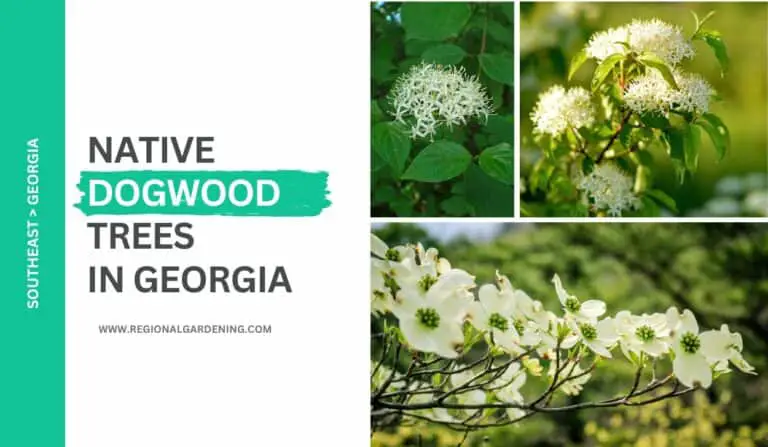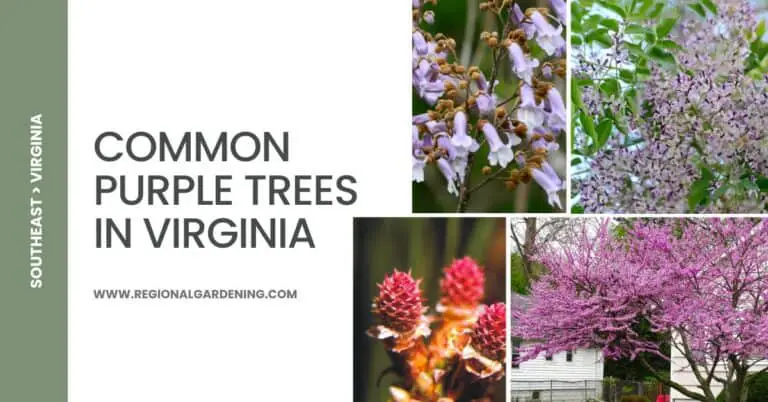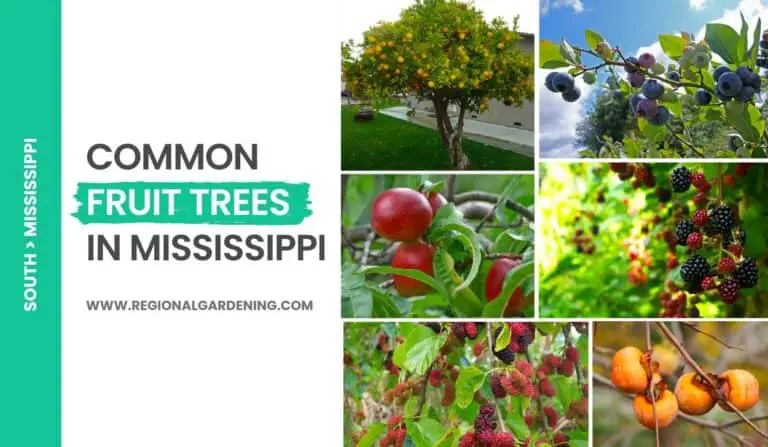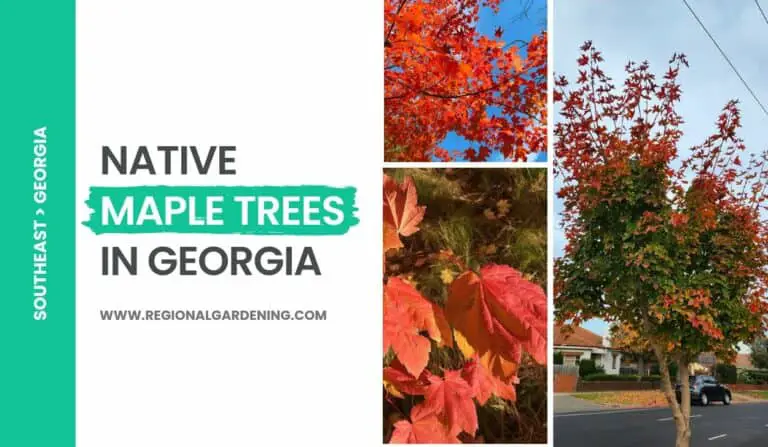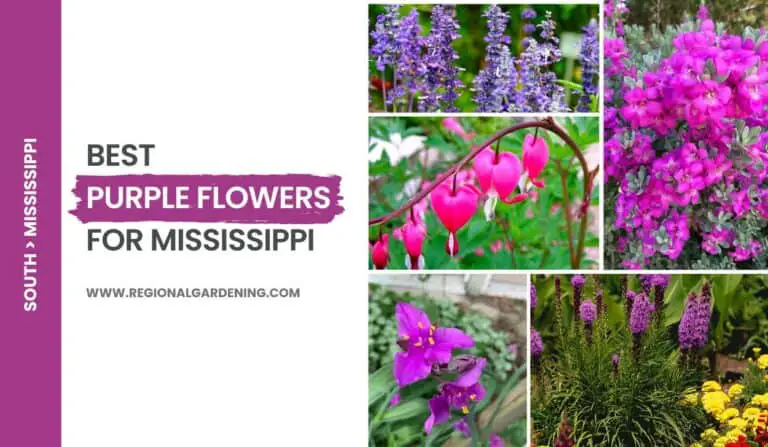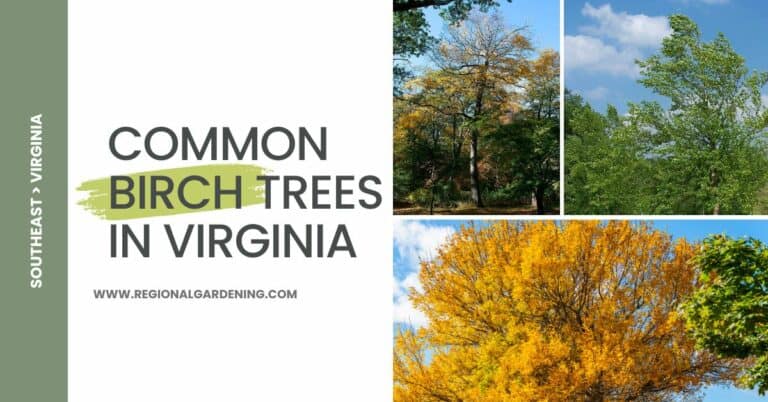5 Native Elm Trees In Mississippi (Photos & Identification)
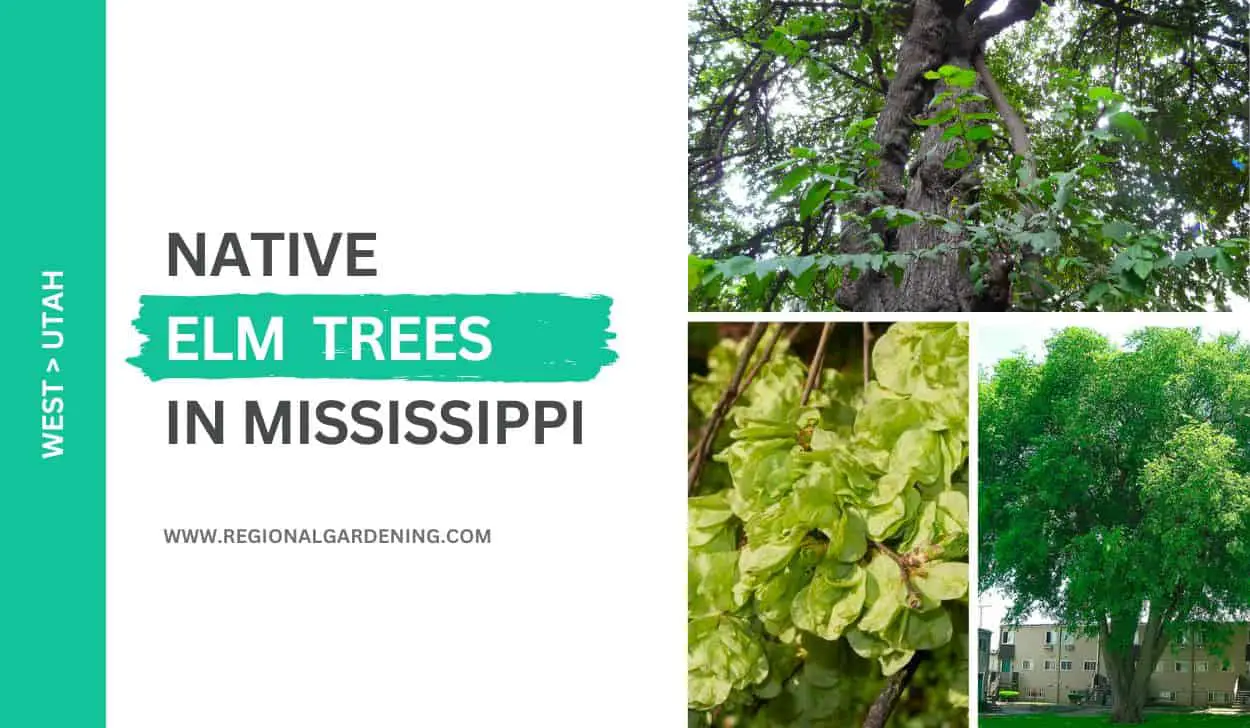
Native Elm trees have played a significant role in the landscape of Mississippi. These majestic trees were once commonly seen throughout the state, however, like many other areas, Mississippi’s native Elm trees faced a devastating setback due to the spread of the Dutch elm fungus disease. As a result, more than 90% of the native varieties were wiped out, forever altering the Mississippi landscape.
Despite this loss, the value and importance of native trees cannot be underestimated. While the state is now home to various non-native hybrid Elm varieties, it is essential to recognize the significance of the remaining native Elm trees in Mississippi.
In this article, we will delve into the three native Elm trees in Mississippi that once dominated the land.
1. American Elm

- Common Name: American Elm
- Scientific Name: Ulmus americana L.
- Mature Height: 120 feet
- Native/Non-Native: Native
- Flowers: Small green flowers that form in clusters of 3-4.
- Uses: Wood for furniture, hardwood dimension, flooring, and construction.
The American Elm trees are one of the majestic Elm trees in Mississippi commonly found throughout the state. It is also known as the white elm, water elm, soft elm, or Florida elm, and is a deciduous tree that can reach heights of 120 feet.
It has oblong-ovate, simple, dark green leaves that are 4.0-6.0 inches long and 4.0-6.0 inches wide. The tree produces little green blooms in bunches as well as oval-shaped seeds known as samaras. The American Elm’s bark is light to medium gray with broad ridges caused by deep fractures.
American Elms are found in flood plains, moist slopes, and along wetland boundaries. They are endemic to the states of Montana, Wyoming, Nebraska, Oklahoma, Texas, and all states to the east.
While the American Elm is not a favored food source for animals, deer, rabbits, and hares may consume its leaves and twigs on occasion. Small birds consume the tree’s seeds, and mice, squirrels, and other animals eat the flower buds, blossoms, and fruit.
The wood of the American Elm is sturdy and difficult to split, making it suitable for the production of furniture, flooring, and building components. Because of its rapid growth and appealing vaselike crown shape, it is also a popular choice for street trees. Unfortunately, Dutch elm disease and elm necrosis have drastically reduced the quantity of wild American Elm trees.
2. Cedar Elm
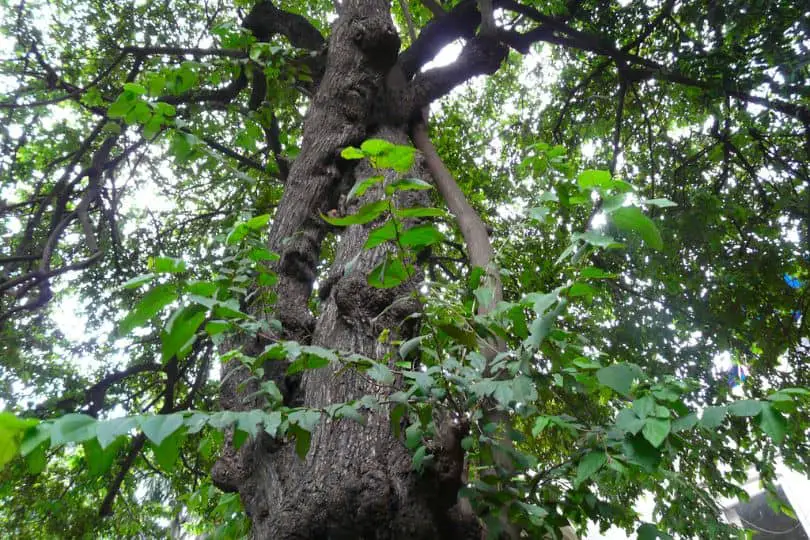
- Common Name: Cedar Elm
- Scientific Name: Ulmus crassifolia
- Mature Height: Up to 90.0 feet
- Native/Non-Native: Native
- Flowers: Small oblong green flowers.
- Uses: Wildlife food, furniture, fence posts, and containers like boxes and baskets.
Cedar Elm is one of the most common elm trees in Mississippi after American Elm. It is also known as basket elm, red elm, southern rock elm, or olmo (Spanish). With its distinct physical characteristics and ecological value, Cedar Elm is an intriguing addition to the state’s wide family of elm trees.
Cedar Elm can grow up to 90 feet tall and has slender twigs that are pale reddish-brown. Its leaves, which are the smallest among native elms, are dark green on top and lighter on the bottom. These leaves are narrowly ovate to elliptical, with coarsely and double-serrated margins.
Cedar Elm flourishes on floodplains, alluvial flats, and stream banks, typically in connection with other hardwoods, in terms of habitat and ecology. It is a valuable food source for many bird species and is an important part of the diet of wild turkeys in Texas. Squirrels eat the buds and seeds as well.
Because of its robust wood and remarkable shock resistance, Cedar Elm has high timber value. It is frequently used to make furniture, fence posts, boxes, baskets, crates, barrels, and caskets. It is popular in landscaping because of its flexibility to varied soil types, urban tolerance, and drought resistance, especially in Texas.
While Cedar Elm is hardy, it is prone to Dutch elm disease, and elm necrosis, and can aggravate fall allergies in certain people. Nonetheless, its presence enhances the beauty and ecological value of the Mississippi environment.
3. September Elm
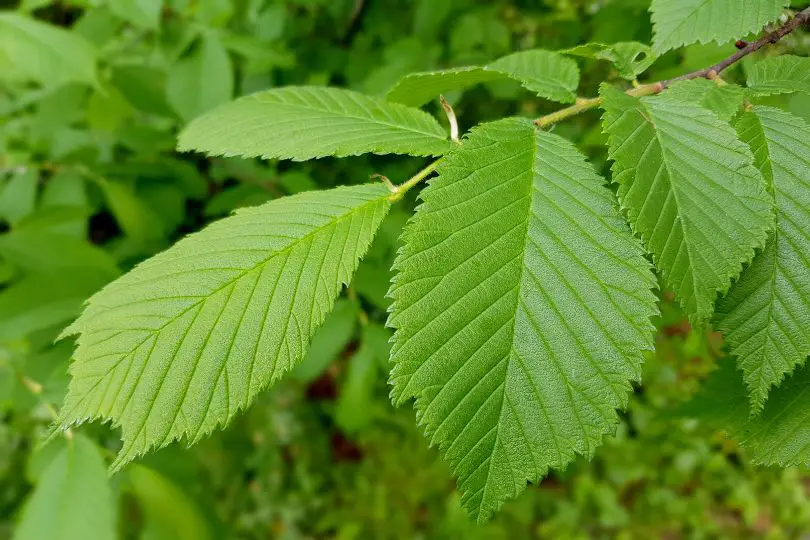
- Common Name: September Elm
- Scientific Name: Ulmus serotina Sarg.
- Mature Height: 70.0 feet
- Native/Non-Native: Native
- Flowers: Small greenish-white flowers.
- Uses: Wildlife food, Wood for lumber.
The September Elms, sometimes known as the red elm, is a tree that may reach heights of 70.0 feet. Its leaves are yellow-green on top and lighter on the underside. The twigs of the tree are slim, glossy, and occasionally hairy. Small greenish-white flowers and flattened seeds with narrow wings are produced by the September Elm. The tree’s bark is light grayish-brown to red-brown.
The September Elm prefers moist clay or sandy loam soils, although it will grow in dry, rocky soils as well. Southern Illinois, Kentucky, Tennessee, Georgia, Alabama, Mississippi, Arkansas, and Oklahoma are its Native/Non-Natives. Although the tree is commonly used in landscaping, it is prone to Dutch elm disease and necrosis.
The September Elm has a variety of natural uses. Deer occasionally eat its twigs and buds, and birds and small mammals consume its seeds. September Elm wood is used for timber and is recognized for its strength and bending properties. It is frequently marketed as rock elm.
While the September Elm is not commonly known, it may be more prevalent than previously thought due to misunderstandings with other elm trees. It’s also one of the few elms that bloom after the leaves have fallen.
4. Slippery Elm
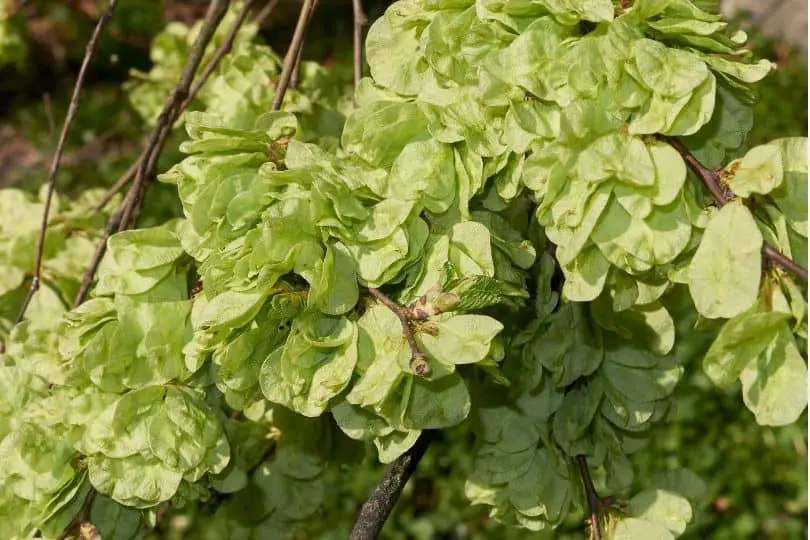
- Common Name: Slippery Elm
- Scientific Name: Ulmus rubra Muhl.
- Mature Height: Up to 85 feet
- Native/Non-Native: Native
- Flowers: Small flowers in clusters, green in color.
- Uses: Nesting habitat for birds, food for songbirds, game birds, and squirrels. The wood is used for making furniture, paneling, and containers.
Slippery Elms are one of the elm trees in Mississippi with high usability. It is often known as red elm that can grow up to 85 feet tall and has dark green leaves on top and paler underneath. The leaves range in length from 5.0 to 7.0 inches and have a coarsely serrated edge.
The twigs of the tree are medium in size and gray in color, with scabrous surfaces and raised lenticels. Slippery Elm features little green flowers that are grouped in bunches. The tree produces flat seeds with broad wings and netted veins.
Slippery Elm is beneficial to animals because it provides nesting space for birds and food for songbirds, game birds, and squirrels. Deer and bunnies nibble on the tree’s twigs. Although Slippery Elmwood is not highly valued for timber, it is nonetheless used professionally to make furniture, paneling, and containers.
Native American tribes have used this tree’s slick inner bark for a variety of purposes, including roofing, paneling, and producing ropes, bags, baskets, tea, and eye wash. Pioneers appreciated the inner bark as a thirst quencher and hunger suppressor. It is now available at health food stores and is used to treat sore throats, coughs, and other bronchial problems as well as as a laxative.
5. Winged Elm
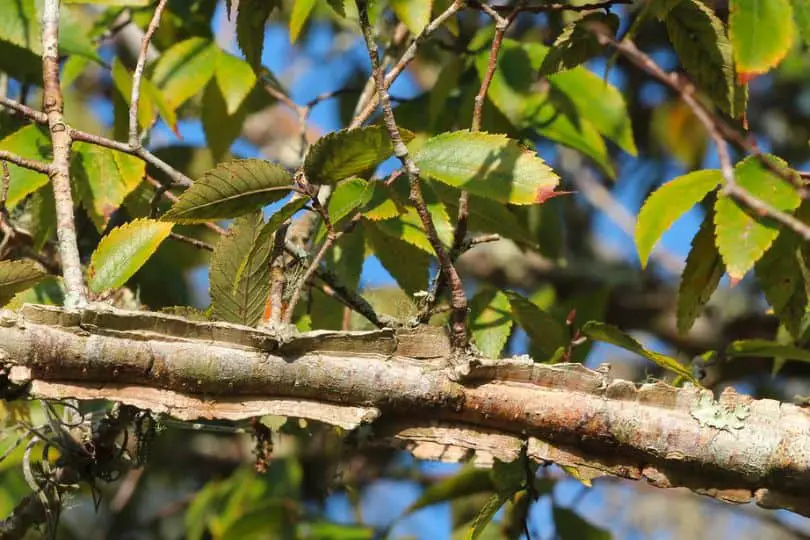
- Common Name: Winged Elm
- Scientific Name: Ulmus alata Michaux
- Mature Height: 65.0 feet
- Native/Non-Native: Native
- Flowers: Small orange-red flowers.
- Uses: Provides food for birds and animals; timber is used for furniture, flooring, and hockey sticks.
The Winged Elms are the shortest native elm trees in Mississippi. It is commonly known as the Cork Elm and it is easily identified by its characteristic corky wings around its twigs. It has oblong-lanceolate leaves that are simple, alternating, and deciduous, and are dark green above and paler below. The leaves are coarsely double serrate with an acute to acuminate apex.
The Winged Elm may grow up to 65.0 feet tall and has a relatively limited life span of less than 50 years. It tolerates shade but has a low tolerance for drought and fire. It prefers dry, gravelly soils at low elevations, but it can also be found beside streams, on alluvial flats, and rare occasions in swamps.
This elm tree is beneficial to both wildlife and timber. Its mast is consumed by birds and animals, making it an important food source. Furthermore, its foliage, mainly the twigs, and leaves, is crucial for white-tailed deer throughout the spring season as a highly nutritious and digestible food source.
The Winged Elm’s lumber is frequently blended with other elms and is typically used for furniture, hardwood dimension, flooring, boxes, and crates. Its strong resistance to splitting makes it particularly desirable for the production of high-quality hockey sticks. Elmwood is very used for making “bent” elements for chairs, such as rockers and arms.
In many southern communities, the Winged Elm is a popular choice for ornamental and street trees. It’s appealing design and low maintenance requirements make it a popular choice among Mississippi homeowners and landscapers.
Similar Articles
- Native Flowering Trees In Mississippi
- Common Fruit Trees In Mississippi
- Native Pine Trees In Mississippi
- Common Palm Trees In Mississippi
- Native Oak Trees In Mississippi
- Native Birch Trees In Mississippi
- Common Magnolia Trees In Mississippi
- Native White Flowering Trees In Mississippi
- Common Pink Flowering Trees In Mississippi
- Native Purple Trees In Mississippi
- Native Plum & Cherry Trees In Mississippi
- Native Ash Trees In Mississippi
- Native Maple Trees In Mississippi
- Native Cypress Trees In Mississippi
- Native Hickory Trees In Mississippi
- Native Nut Trees In Mississippi
Common Elm Trees In Mississippi – Sources
The Regional Gardening team makes sure that the information in our articles is accurate by only using sources that are known to be trustworthy. Some of these sources are peer-reviewed journals from government agencies, well-known universities, and scientific research organizations.
- Native Trees For Mississippi Landscapes, Mississippi State University Extension.
- Mississippi Trees, Publications Of Mississippi Forestry Commission.
- Department Of Plant & Soil Sciences, Mississippi State University Extension.
- Tree Care, Mississippi Urban Forest Council


